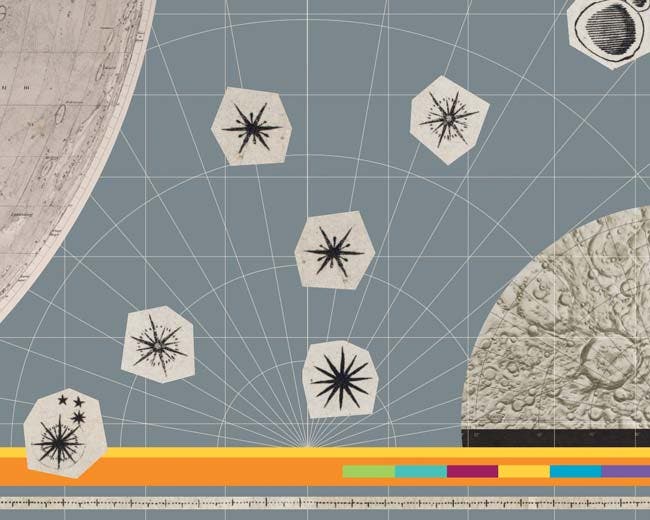
Mapping the Moon
Early Telescopic Observations
Telescopic study of the Moon began in the first decade of the 17th century soon after the invention of the telescope.
Galileo Galilei
Galileo was the first astronomer to publish drawings of the Moon based on telescopic observations. In his book, Sidereus nuncius (Starry Messenger), published in 1610, Galileo included copperplate engravings of drawings he had made of the Moon in four different phases. The images were a revelation. Rather than a smooth sphere, Galileo’s observations showed that the Moon, like the Earth, had a rugged landscape of mountains, valleys, and craters.
Johannes Hevelius
Polish astronomer Johannes Hevelius began telescopic observations of the Moon in 1643 with a telescope that he made. Hevelius published his observations in his 1647 book, Selenographia. The treatise includes three large, detailed lunar maps (one of which is on display in the adjacent case) and 40 engravings of the Moon in various phases
Robert Hooke
Robert Hooke’s Micrographia, published in 1665, is best known for its wonderfully detailed illustrations of insects and other objects that he had viewed under a microscope. Hevelius also included one illustration of the Moon in his book, a close-up view of lunar crater, Hipparchus, based on his observations with a 30-foot refractor telescope. It was the first detailed illustration of a specific lunar feature.
Giovanni Cassini
Giovanni Cassini produced his first lunar map in 1679 based on his observations at the Paris Observatory. Very few copies were made of the large map, but a smaller version was first published in 1692 in advance of a total eclipse of the Moon. Forty sites on the Moon were numbered so that observers, in an attempt to determine longitude values at their locations, could track the timing of the eclipse as the Earth’s shadow passed over the lunar landscape.
